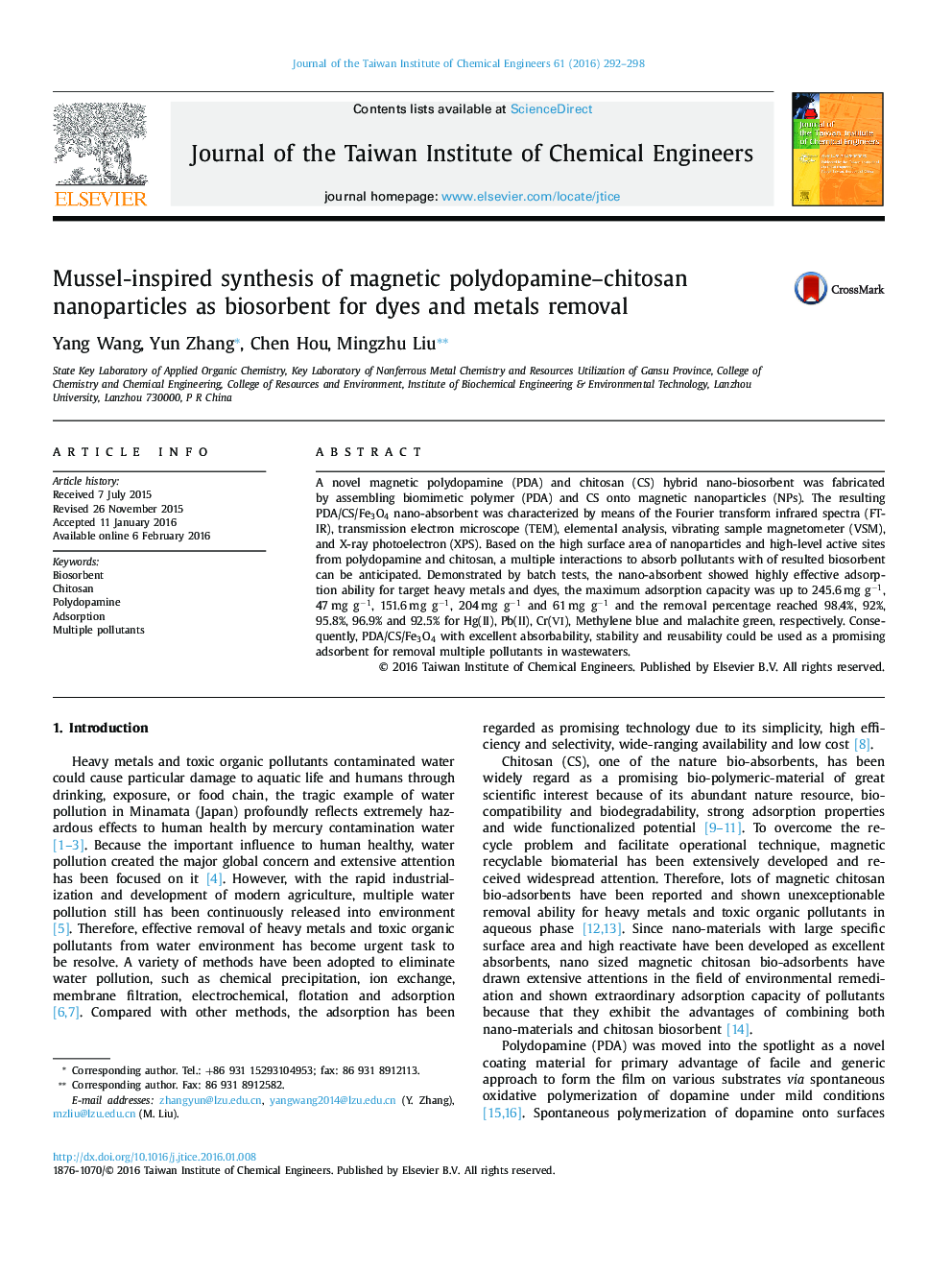| Article ID | Journal | Published Year | Pages | File Type |
|---|---|---|---|---|
| 690370 | Journal of the Taiwan Institute of Chemical Engineers | 2016 | 7 Pages |
•The magnetic PDA and chitosan hybrid nano-biosorbent was firstly synthesized.•PDA could cross-link the chitosan to increase the stability of biosorbent.•The nano-biosorbent shows strong adsorption capacity for multiple pollutants.•The removal ratios of all pollutants are all higher than 90%.
A novel magnetic polydopamine (PDA) and chitosan (CS) hybrid nano-biosorbent was fabricated by assembling biomimetic polymer (PDA) and CS onto magnetic nanoparticles (NPs). The resulting PDA/CS/Fe3O4 nano-absorbent was characterized by means of the Fourier transform infrared spectra (FT-IR), transmission electron microscope (TEM), elemental analysis, vibrating sample magnetometer (VSM), and X-ray photoelectron (XPS). Based on the high surface area of nanoparticles and high-level active sites from polydopamine and chitosan, a multiple interactions to absorb pollutants with of resulted biosorbent can be anticipated. Demonstrated by batch tests, the nano-absorbent showed highly effective adsorption ability for target heavy metals and dyes, the maximum adsorption capacity was up to 245.6 mg g−1, 47 mg g−1, 151.6 mg g−1, 204 mg g−1 and 61 mg g−1 and the removal percentage reached 98.4%, 92%, 95.8%, 96.9% and 92.5% for Hg(II), Pb(II), Cr(Ⅵ), Methylene blue and malachite green, respectively. Consequently, PDA/CS/Fe3O4 with excellent absorbability, stability and reusability could be used as a promising adsorbent for removal multiple pollutants in wastewaters.
Graphical abstractFigure optionsDownload full-size imageDownload as PowerPoint slide
